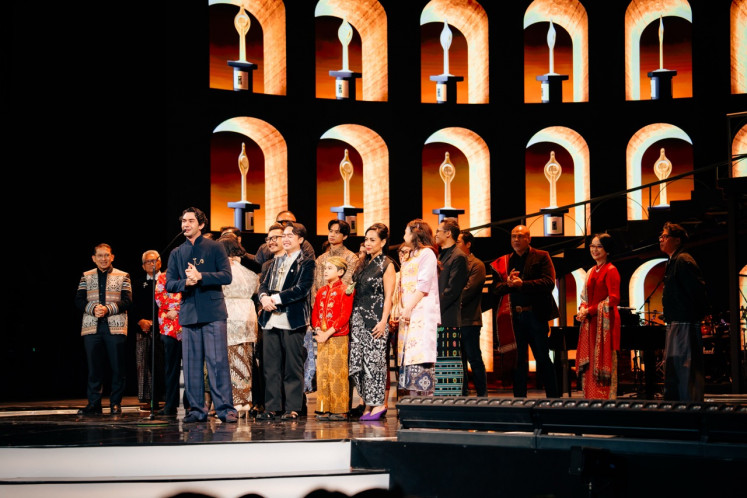Popular Reads
Top Results
Can't find what you're looking for?
View all search resultsPopular Reads
Top Results
Can't find what you're looking for?
View all search results'The Seen and Unseen' interprets grief through subtly vivid sequences
Change text size
Gift Premium Articles
to Anyone
A
film that explores the bond between Balinese buncing (boy-girl) twins is delivered in a meditative mood with trance-like sequences, as writer-director Kamila Andini's Sekala Niskala (The Seen and Unseen) takes a child's perspective on mortality in the face of imminent loss.
The story begins with 10-year-old Tantri (Ni Kadek Thaly Titi Kasih) coming to the hospital to visit her bedridden twin brother Tantra (Ida Bagus Putu Radithya Mahijasena), though she is too afraid to step inside the room.
Early on in the film, ominous symbolism is already present when Tantri looks toward the hospital bed. An egg she tightly clutches breaks after she looks at something out of frame. The egg remains a constant symbol throughout the film.
The scene soon jumps back to the days before Tantra had fallen ill, where he would steal eggs for Tantri to cook. They share the fried egg according to their eating preferences, with Tantri eating only the white as she cuts out the yolk for Tantra, a nod to their yin-yang relationship.
"People said that [buncing twins] is a symbol of balance. You're lucky to have him, and so [is] he. You guys complete each other," a hospital nurse tells Tantri at one point.
The words linger throughout the entire film, as it slowly uncovers Tantri's sorrow while she delves into a world without her brother.
Read also: The movie ‘Sekala Niskala’ won Grand Prix at Berlin International Film Festival 2018
Though the storyline sometimes remains unclear and almost dream-like — jumping between daily activities to Tantri's mysterious nighttime fantasies imbued in Balinese traditional folklore and culture — what remains unequivocal is Tantri's grief in the absence of Tantra.
Ayu Laksmi, who plays the mother, tries to comfort the young girl while trying hard to mask her sadness within her fragile demeanor.
Symbolism remains strong and is abundant all throughout the film, which moves at a languid pace accompanied by Yasuhiro Morinaga’s trance-like score. Dialogue is scarce, and in place of conversations are traditional dances and movements to translate the emotions and interactions that move the story along.
Animals were the inspirations behind the dances, with the twins playfully taking after a rooster at one point. One of the most evocative dances was Tantri's monkey, reflecting her loss of control of her bottled up emotions.
The Seen and Unseen not only boasts a unique and outstanding achievement in Indonesian cinema, it also provides a window into Balinese culture not often seen by the world at large.
Since its premiere in the Toronto International Film Festival (TIFF) last September, the film has been well received at various film festivals. Most recently, it became the first Indonesian film to win the Grand Prix of the Generation KPlus International Jury award for Best Feature-Length Film at the 2018 Berlin International Film Festival. (kes)










